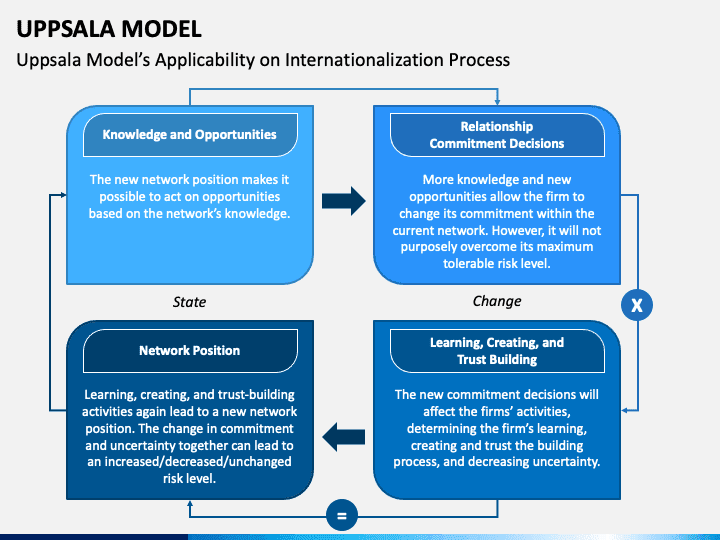This article explores the process of internationalization of small and medium-sized Russian manufacturing enterprises entering the markets of the Commonwealth of Independent States (CIS). The goal of the study is to develop and substantiate a step-by-step strategy for building international distribution through modern digital platforms. The objectives include analyzing theoretical models of internationalization, examining the functionality of digital marketplaces as tools for export activities, and summarizing practical experience based on a successful case study. The paper proposes a three-phase model encompassing the preparatory, implementation, and optimization stages. The analysis demonstrates that digital trading platforms significantly reduce entry barriers to foreign markets by addressing challenges related to logistics, marketing, and trust-building. The findings may be applied by entrepreneurs and manufacturing executives to design effective export strategies.
Introduction
Expanding into international markets is one of the key factors in the sustainable development of manufacturing enterprises. Export activities not only increase sales volumes and diversify risks but also drive improvements in product quality and operational efficiency. For Russian manufacturers, the markets of the Commonwealth of Independent States represent a logical and attractive direction for initial international expansion due to geographic proximity, cultural ties, and ongoing economic integration processes.
The relevance of this study is driven by the growing need for small and medium-sized businesses to explore new sales markets. Despite their apparent accessibility, entering CIS countries is associated with a range of challenges — including customs regulations, logistics, and the establishment of distribution channels. The purpose of this article is to analyze and systematize a strategic approach to building international distribution for a manufacturing company, focusing on the use of digital trading platforms as the most effective tool at the current stage.
Models of SME Internationalization
Scholarly research on the process of entering foreign markets presents several theoretical models. One of the fundamental ones is the Uppsala Model, which describes internationalization as a gradual, step-by-step process [5]. According to this model, firms first enter geographically and psychologically close markets, accumulating experience and knowledge, and only later move toward more distant and complex regions. The markets of the CIS fully meet the criteria of psychological proximity for Russian companies, making this model particularly relevant.

Modern Research Complements This Approach
Modern research complements this approach by pointing to the phenomenon of “born global” companies, which from the very beginning are oriented toward international markets due to the use of internet technologies [1].
The digitalization of the economy has fundamentally changed the landscape of international trade.
Digital platforms, such as online marketplaces, allow companies to overcome traditional barriers and gain access to end consumers in different countries with minimal initial investments [3].
These platforms function as multi-sided ecosystems, where success is determined by network effects: a large number of buyers attracts sellers, and vice versa [2].
Digital Marketplaces as a Distribution Channel in the CIS
For a manufacturing enterprise that is beginning export activities, large online marketplaces operating in the territory of Russia and the CIS countries offer a ready-made infrastructural solution.
They make it possible to solve several fundamental tasks at once.

Firstly, instant access is provided to a wide audience of consumers in the target countries, which eliminates the need to independently search for local distributors or open retail outlets.
Secondly, marketplaces offer comprehensive logistics services, including warehousing, order processing, and delivery to the end customer. This significantly simplifies the management of international supply chains, which is one of the most complex tasks in export operations [6].
Thirdly, the platform acts as a guarantor of transaction security, which contributes to building trust among foreign buyers. In online trade, trust is one of the decisive factors influencing the purchase decision, especially in cross-border operations [4]. The mechanisms of reviews, ratings, and buyer protection embedded in the marketplace’s functionality perform the function of social proof and reduce the perceived risks for the consumer.
A Step-by-Step Strategy for Building International Distribution
An analysis of practical experience makes it possible to formulate a three-phase model for building distribution in CIS countries through digital platforms. As an example, one can consider the activity of a Russian enterprise producing automobile accessories, which in 2024 successfully entered the markets of Armenia, Belarus, Kazakhstan, and Tajikistan.
Phase 1: Creating a strong internal foundation.
Before entering export markets, a company must achieve stable positions in the domestic market. This implies the presence of well-established production processes, a wide and in-demand product range, as well as high-quality digital content — including professional photographs and detailed product descriptions optimized for search engines [3].
Phase 2: Launching on an international digital platform.
At this stage, the company selects a marketplace with the maximum coverage in the target CIS countries and uploads product listings. The use of the platform’s internal advertising tools allows compensation for the lack of an initial rating and ensures the visibility of products to foreign buyers.
Phase 3: Optimization of logistics and operational processes.
After receiving the first orders from CIS countries, the main task becomes fine-tuning the logistics chains. The enterprise must choose the optimal model for working with the platform — for example, supplying goods to local warehouses of the marketplace in the countries of operation or delivering from a central warehouse in Russia. Effective inventory management and delivery time control become decisive factors in maintaining a high level of customer satisfaction and increasing sales volumes [6].
Conclusion
The entry of a manufacturing enterprise from Russia into the markets of CIS countries is a complex but achievable process. The analysis shows that traditional models of gradual internationalization remain relevant; however, modern digital technologies can significantly accelerate and simplify this process.
Using major online marketplaces as the main distribution channel provides a ready-made solution for overcoming entry barriers related to logistics, marketing, and trust-building.
The proposed three-phase strategy, which includes building a strong internal foundation, a technically competent platform launch, and subsequent logistics optimization, makes it possible to systematize the process and minimize risks. Successful implementation of this strategy enables small and medium-sized manufacturing enterprises to efficiently scale their activities and build sustainable international sales channels.
References:
1) Coviello N. E., McAuley A. Internationalisation and the smaller firm: A review of contemporary empirical research // Management International Review. 1999. Vol. 39, No. 3. P. 223–256.
2) Zhu F., Iansiti M. Why some platforms thrive and others don’t // Harvard Business Review. 2019. Vol. 90, No. 1/2. P. 118–123.
3) Chaffey D., Ellis-Chadwick F. Digital Marketing: Strategy, Implementation and Practice. 5th ed. Harlow: Pearson UK, 2012. 698 p.
4) Gefen D., Karahanna E., Straub D. W. Trust and TAM in online shopping: an integrated model // MIS Quarterly.2003. Vol. 27, No. 1. P. 51–90.
5) Johanson J., Vahlne J. E. The internationalization process of the firm – a model of knowledge development and increasing foreign market commitments // Journal of International Business Studies. 1977. Vol. 8, No. 1. P. 23–32.
6) Christopher M. Logistics & Supply Chain Management. 5th ed. Harlow: Pearson UK, 2016. 328 p.


































